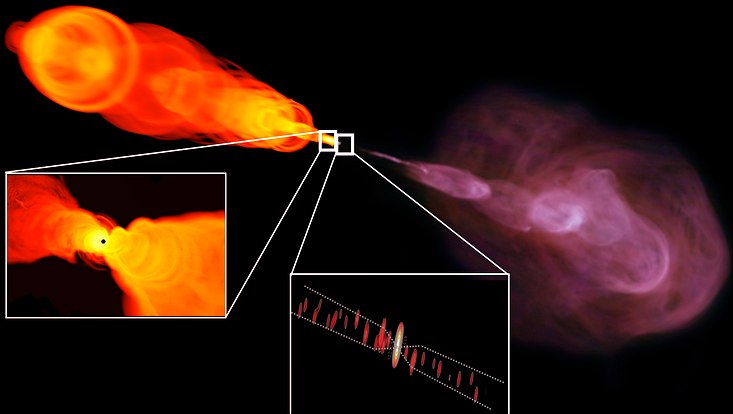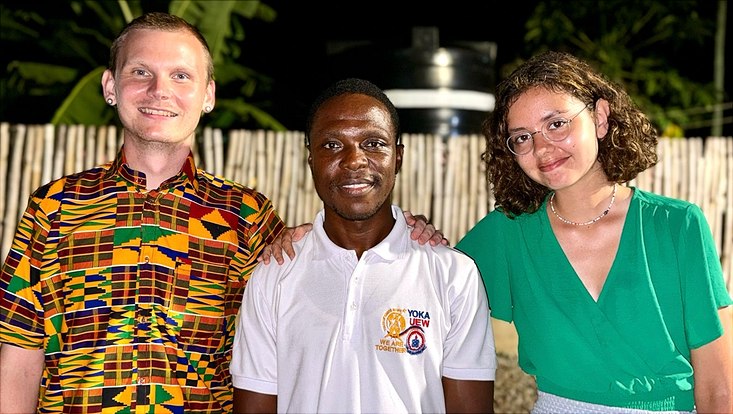New research groupMysterious jets from black holes
14 July 2021, by PM/Anna Walter

Photo: Matthias Kadler (JMU); individual pictures: C. Fromm (JMU), A. Baczko (MPIfR), R. Perley and W. Cotton (NRAO/AUI/NSF).
The powerful jets shooting out of black holes will be the focus of a new German Research Foundation (DFG) research group, which includes two researchers from the Cluster of Excellence Quantum Universe at Universität Hamburg. The research group has been granted €3.6 million in funding.
Black holes are found at the center of almost all galaxies. Their mass is beyond imagination, sucking in material, gas, and even light. At the same time, massive amounts of energy in the form of jets are released into surrounding space.
“Black holes sound abstract, but they have a major impact on our universe. That is what we are investigating in this research group,” explains Prof. Dr. Marcus Brüggen from the Hamburg Observatory of Universität Hamburg. Dr. Manuel Meyer from the Institute of Experimental Physics is also working with the research group. The Hamburg subproject is focusing on radio observations of jets from black holes, including from the Low Frequency Array (LOFAR) telescope.
Jets pose a mystery
Jets are bundled plasma streams, that accelerate particles with massive amounts of energy, spewing out from the center of the galaxy at almost light speed. They can reach hundreds of thousands of lights years into space, sending out strong radio, x-ray, and gamma rays. So far, these jets have posed more questions than researchers have answers: What are they made of? How do they start in the immediate vicinity of super-massive black holes? What processes are responsible for their high-energy radiation, and how does this interact with the parent galaxy? The new research group Relativistic Jets in Active Galaxies is aiming to answer these questions. “The research group provides a brilliant opportunity to test theoretical predictions and simulations using the newest data and observations,” enthused Dr. Manuel Meyer.
Cooperation and innovative approaches
The German Research Foundation (DFG) will provide 3.6 million euros of funding to the group within the next four years, with astrophysicist Prof. Dr. Matthias Kadler from the Julius Maximilian University of Würzberg as the group’s spokesperson. In addition to Universität Hamburg, the group also involves members from the universities of Heidelberg, Erlangen-Nürnberg, the Leibniz Institute for Astrophysics in Potsdam, and the Max Planck Institute for Astronomy and Radioastronomy in Heidelberg and Bonn.
DFG research groups are intended to allow researchers to address current issues in their field, and to establish innovative new directions in research. The funds provided by the DFG are largely intended for new projects for early career researchers.


